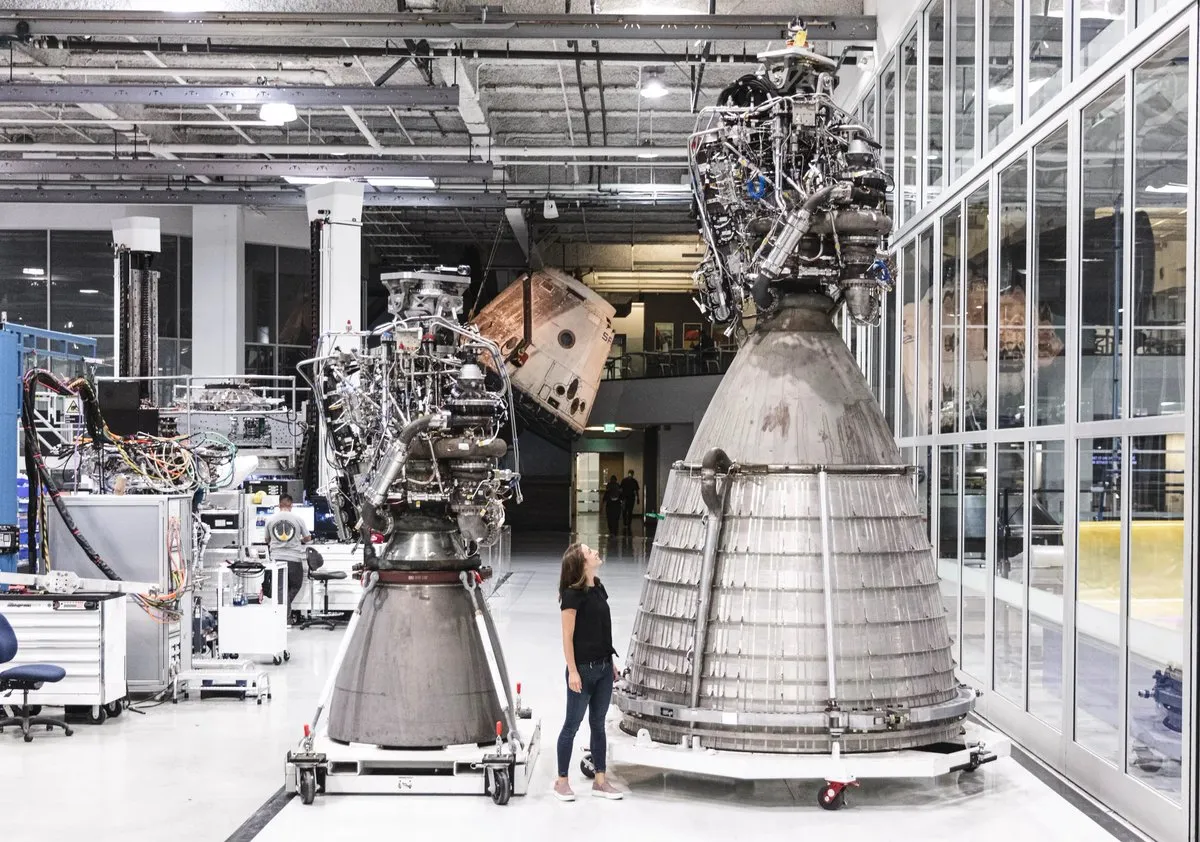The Thermodynamic Challenge of Hypersonic Reentry
The physics behind spacecraft reentry has always fascinated me. When an object traveling at orbital velocities (≈7.8 km/s) encounters Earth’s atmosphere, the thermodynamics at play are nothing short of extraordinary. During Starship’s IFT-3 mission, we witnessed one of the most visually striking demonstrations of these principles.
During the IFT-3 launch, Starship’s re-entry generated super hot plasma due to its hypersonic speed through the atmosphere, breaking air molecules into charged plasma. With SpaceX’s intensely engineered heat tiles, the plasma is a site-to-see, rather than a detriment to the… pic.twitter.com/udv8ICv2JD
— Samuel Katsaros (@SamuelKatsaros) March 14, 2024
At reentry speeds, air molecules can’t simply flow around the vehicle. Instead, the kinetic energy ($E_k = \frac12mv^2$) transforms into thermal energy with such intensity that it dissociates and ionizes atmospheric particles. The result? A superheated plasma sheath that engulfs the spacecraft, reaching temperatures of approximately 1,650°C (3,000°F) for typical orbital reentries.
SpaceX’s Thermal Protection System (TPS): Not Just Heat Shields
What makes SpaceX’s approach remarkable is how they’ve transformed a potential catastrophe into a spectacle of engineering prowess. Their thermal protection system represents a significant advancement over previous generations:
-
Material Science Breakthrough: SpaceX developed their own heat shield tiles rather than outsourcing, giving them iterative control over the design process. These hexagonal tiles are composed of silica fibers capable of withstanding extreme temperature gradients.
-
Computational Fluid Dynamics (CFD): The distribution and geometry of these tiles weren’t determined by guesswork. Extensive CFD modeling identified the precise heat flux distribution across Starship’s surface during various reentry profiles.
-
Mathematical Optimization: The TPS layout represents a multi-variable optimization problem, balancing mass constraints, thermal performance, and manufacturing complexity—a classic example of Pareto optimization in aerospace engineering.
Historical Context and Innovative Improvement
The challenge of reentry thermal management has been a significant hurdle since the dawn of spaceflight. The original Mercury capsules used an ablative heat shield that actually burned away deliberately, carrying heat with it in a process known as pyrolysis. The Space Shuttle used ceramic tiles so effective at thermal insulation that you could hold one edge while the other glowed red-hot.
Starship’s innovation comes in creating a reusable system that’s:
- Rapidly manufacturable
- Robust against the stresses of multiple flights
- Optimized for mass constraints
- Designed for minimal refurbishment
IFT-3: A Historic Mission Beyond the Plasma Show
The plasma generation was just one spectacle in what turned out to be a historic test flight. Starship achieved several remarkable milestones:
Today’s mission was historic…
— Samuel Katsaros (@SamuelKatsaros) March 14, 2024
During the IFT-3 mission, Starship achieved remarkable milestones and set new records:
- Starship, at ~5000 tons, became the largest flying object ever made.
- First successful hot-stage separation for a vehicle of this size.
- Reached suborbital… pic.twitter.com/cmHPrkhhnb
The significance of these achievements can’t be overstated. The hot-stage separation alone represents a complex control systems challenge, requiring precision thrust vectoring and separation dynamics that must account for aerodynamic interactions between stages.
The Engineering Economics of Starship
What continues to impress me about SpaceX’s approach is their focus on the fundamental economics of space access. By creating a fully reusable system capable of rapid turnaround, they’re addressing the core cost drivers in a way no other aerospace entity has managed.
Consider the mathematics:
- A conventional expendable rocket amortizes 100% of its manufacturing cost across a single mission
- A partially reusable system (like Falcon 9) amortizes booster cost (~70% of vehicle) across multiple missions (~10-15)
- A fully reusable system like Starship aims to amortize nearly 100% of the vehicle cost across potentially hundreds of missions
The resulting cost curve approaches asymptotically toward the cost of propellant and operations—a paradigm shift in access to space economics.
Looking Forward: Implications for Mars and Beyond
The plasma phenomenon we witnessed during IFT-3 is just a glimpse of the challenges awaiting interplanetary travel. Mars entry will be even more demanding, with vehicles entering the atmosphere directly from interplanetary trajectory ($v ≈ 5.7$ km/s relative to the Martian surface).
The thermal protection system being validated on Starship represents a critical enabling technology for human Mars exploration—one that must function with extremely high reliability when so far from home.
For those of us who build systems and think in first principles, watching SpaceX iterate on these problems in the public arena provides masterclass lessons in engineering, physics, and organizational velocity. Each test brings us closer to becoming a multi-planetary species—the ultimate asymptotic goal worth pursuing.
Last updated on May 14, 2025 at 12:17 AM UTC+7.
